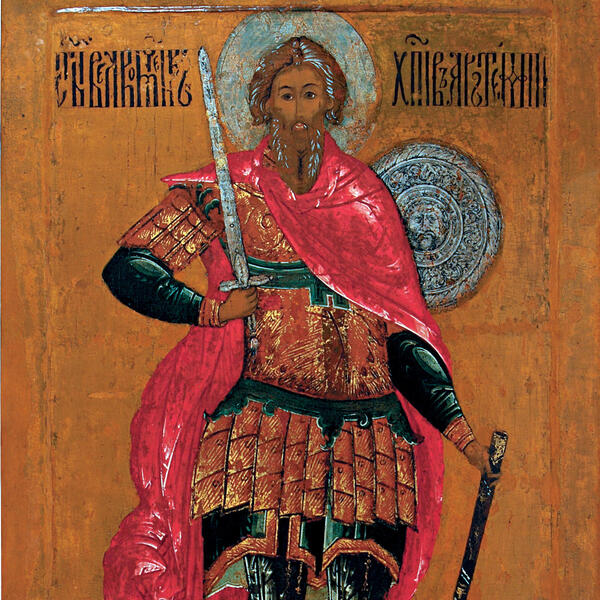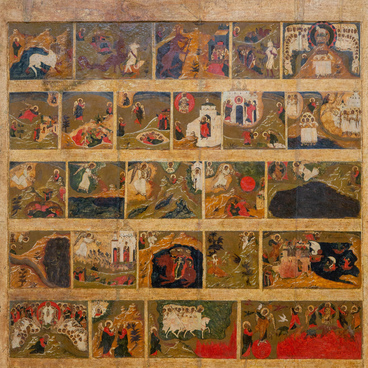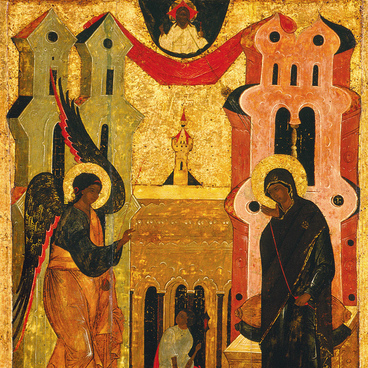Saint Artemius died as a martyr in 362. Historians believe that he was Flavius Artemius, the imperial prefect of Roman Egypt who led active campaigns against paganism. His life was first described by Philostorgius in “Church History” in the first half of the 5th century. The hagiography was later rewritten by a monk called John, and eventually by Symeon the Metaphrast in the 10th century.
Artemius came from a family of patricians and was a celebrated military commander during the reign of Emperors Constantine the Great and his brother Constantius. During the time of Constantine, he, like many others, witnessed a miracle. On the day before the final battle against Maxentius, a cross of light appeared in the heavens at midday with the words “In this sign thou shalt conquer”. Moreover, Constantine had a dream in which Christ told him to march into the battle with a cross sign on the banners, shields, and helmets. The emperor won the battle.
Emperor Constantius entrusted Artemius with the important task of recovering the relics of the Apostles Luke, Andrew, and Timothy and bringing them to Constantinople. For his achievements, Artemius was awarded the administration of Roman Egypt. In this role, he contributed to spreading Christianity.
Julian the Apostate, the son of Emperor Constantius, supported the restoration of polytheism and started persecuting Christians. Artemius tried to interfere, and the new emperor ordered to degrade Artemius from priesthood, arrest and torture him. In prison, the saint martyr continued praising God and repeating the question of whether he had endured as much suffering as the Savior. Jesus appeared to him with angels to console him and promise that Artemius would end up in the Kingdom of Heaven. The next day, on Friday (the day of the Crucifixion), having suffered even more tortures and still refused to worship idols, Saint Artemius was beheaded. Before death, he said that his tormentor would also die soon. Indeed, Julian the Apostate was soon wounded in a battle with the Persians and died, his last words being “You have won, Galilean!”
The relics of Saint Artemius were buried in Constantinople at a spot that soon became famous for its miracles.
Most likely, this icon was the main icon of the side altar of Artemius the Warrior at the Annunciation Church in Yaroslavl. It might have been based on the earlier image from the Trinity Lavra of St. Sergius. In the late 17th century, a frame with 24 hagiographical border scenes was added to the icon.
The monumental figure, the rather dry painting of the face, and noticeable white lines suggest that the icon was painted during the Time of Troubles. In some of its features, it is similar to images of warrior saints painted in the 16th century.
Artemius came from a family of patricians and was a celebrated military commander during the reign of Emperors Constantine the Great and his brother Constantius. During the time of Constantine, he, like many others, witnessed a miracle. On the day before the final battle against Maxentius, a cross of light appeared in the heavens at midday with the words “In this sign thou shalt conquer”. Moreover, Constantine had a dream in which Christ told him to march into the battle with a cross sign on the banners, shields, and helmets. The emperor won the battle.
Emperor Constantius entrusted Artemius with the important task of recovering the relics of the Apostles Luke, Andrew, and Timothy and bringing them to Constantinople. For his achievements, Artemius was awarded the administration of Roman Egypt. In this role, he contributed to spreading Christianity.
Julian the Apostate, the son of Emperor Constantius, supported the restoration of polytheism and started persecuting Christians. Artemius tried to interfere, and the new emperor ordered to degrade Artemius from priesthood, arrest and torture him. In prison, the saint martyr continued praising God and repeating the question of whether he had endured as much suffering as the Savior. Jesus appeared to him with angels to console him and promise that Artemius would end up in the Kingdom of Heaven. The next day, on Friday (the day of the Crucifixion), having suffered even more tortures and still refused to worship idols, Saint Artemius was beheaded. Before death, he said that his tormentor would also die soon. Indeed, Julian the Apostate was soon wounded in a battle with the Persians and died, his last words being “You have won, Galilean!”
The relics of Saint Artemius were buried in Constantinople at a spot that soon became famous for its miracles.
Most likely, this icon was the main icon of the side altar of Artemius the Warrior at the Annunciation Church in Yaroslavl. It might have been based on the earlier image from the Trinity Lavra of St. Sergius. In the late 17th century, a frame with 24 hagiographical border scenes was added to the icon.
The monumental figure, the rather dry painting of the face, and noticeable white lines suggest that the icon was painted during the Time of Troubles. In some of its features, it is similar to images of warrior saints painted in the 16th century.



